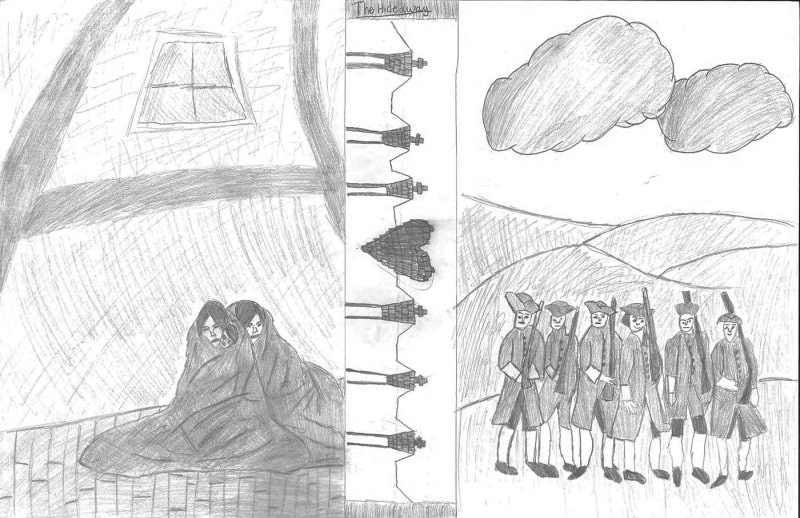Political Cartoons, Redrawn
This month’s blog post belongs to educator Mark Stetina and his students at The Shipley School, who recently finished an assignment that paired Ghost River with the Library Company’s rich political cartoon collection. In addition to critically engaging primary and secondary source materials, Mark asked his students to create their own political cartoons, which are extraordinary in their own right. After Mark’s thoughtful synopsis of the assignment, you’ll have an opportunity to see three of those student-created cartoons, accompanied by reflections from the young artists.
Shipley 8th Grade History students examined political cartoons from the Library Company of Philadelphia’s political cartoon collection available on Digital Paxton. They discussed how Native Americans, and women in particular, were portrayed as part of a larger study of colonial North America in the pretext of the American Revolution. Students contextualized the activity starting with the end of the Seven Years’ War and Proclamation of 1763. Students contemplated ideas about freedom, liberty, preconceptions about the American Revolution, and dominant historical narrative. Their guiding question was whose story is being told and how.
Students then read Ghost River and were asked to draw their own political cartoons about the massacre at Conestoga Indiantown at the hands of the Paxton Boys. Students researched current events about Native American communities fighting for social justice in order to continue examining resilience, bias, racism, inequity and stereotyping in mass media. Lastly, students reflected on deconstructing stereotypes and romanticized ideas about Native American communities that permeate their formal and informal education. The comments below are student explanations about their political cartoons and overall learning experiences.
– Mark Stetina, Middle and Upper School History Teacher and 8th Grade Dean, The Shipley School
In history class, we learned about how the aftermath of the Seven Years’ War affected Native Americans in North America through examining political cartoons and reading Ghost River. We were asked to make our own political cartoon based on this topic to further expand our knowledge on different historical points of view. When reading Ghost River, I thought that it was a tragedy how the colonist treated the Native Americans and it really showed me how disrespectful they were and how history silenced many people. I then took the information I just learned and put it into a drawing. The fact that the native Americans were considered basically less than inspired the layout and overall idea of my political cartoon.
-E.B.
In our history class, we read Ghost River, a graphic novel about the Paxton Massacres where Paxton Boys murdered a group of unarmed Conestoga people. This story is a tragedy and should be talked about by many in North America. It shows the resilience and determination of the Conestoga people and what they did after this horrible genocide. We were given the task to create a political cartoon representing the Conestoga people’s side of the story. This gave us the chance to learn the different perspectives of the story from people who were excluded. Comparing our political cartoons to cartoons created during the time of the massacres, we saw how the white people portrayed the Conestoga people as animals, symbolizing that they weren’t actually humans but instead, portrayed as wild living creatures.
– E.N.
The political cartoon that I had drawn was a wampum belt dividing the Native Americans and the American soldiers. It shows how the Native Americans had to hide out of fear from getting hurt or killed especially from the Paxton boys. The American soldiers had guns and were all lined up ready to go into a battle, this shows their violence and how they viewed the Native Americans. The Native Americans had to hide innocently because people were taking over and stealing their land. The wampum belt dividing them shows peace and how the Native Americans only wanted peace and not to be sucked into the American’s war.
– A.I.






